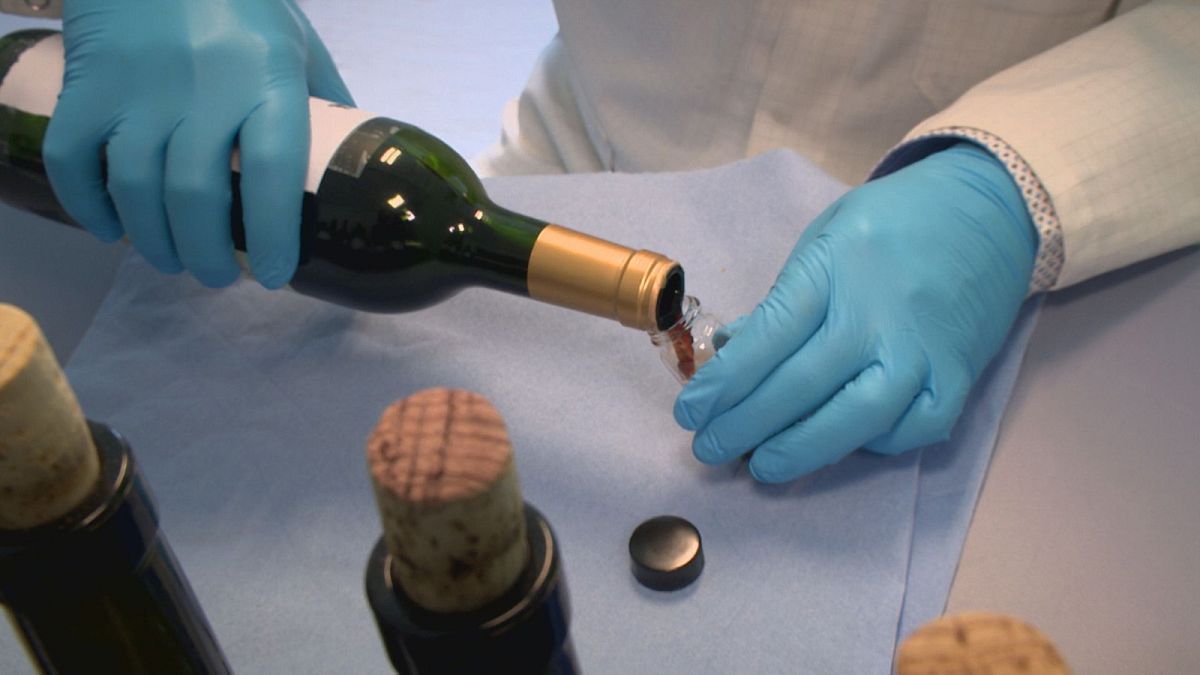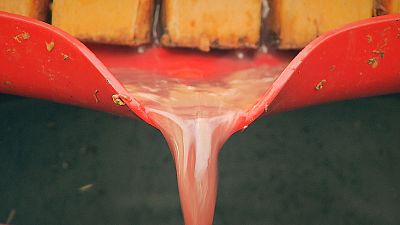One of the agricultural products most affected by counterfeiting is wine. So we need new methods for find out what we are really drinking.
Food fraud in Europe amounts to several millions of euros.
One of the agricultural products most affected by counterfeiting is wine. Thanks to sophisticated techniques it is possible to verify the quality and origin of the grapes, in this way protecting producers and consumers.
Wine is a premier agricultural product of the EU and exported worldwide, says the European Wine Hub.
That being so it is crucial to protect this market.
European wines have been threatened more and more by advanced adulterations techniques during the last decades. So we need new methods for find out what we are really drinking.
Carrying out this forensic work is the EU Joint research centre. Its job is to find out what the wines are made of at a atomic level. The first step involves harvesting the grapes from their region of production.
These inspectors, supervised by Italy’s Ministry of Agriculture in Catania, are picking grapes in the Etna vineyards to get them analysed.
“To check whether a wine is authentic, we get the isotopic ratios on the official sample and we compare this with the reference data, says Grazia Laura Gambino, chemist at ICQRF.
“How does it work? We first refer to the database to choose the reference samples, for that grape vintage, for that year, for that controlled designation of origin (DOC), then we’ll make a comparison of the parameters we’ve got from the database with the parameters found on that data sample.”
After having collected grape samples, researchers produce a sample batch of wine which is then analysed by sophisticated techniques to determine the isotopic characteristics of its alcohol and water.
That’s extremely important as the main types of wine adulteration are adding water, alcohol or sugar.
The information is sent to the EU Wine Data Bank, in Geel (Belgium).
At the laboratories we can see how nuclear-based technology is used to identify the fingerprint of a genuine wine.
“This is a sample of alcohol that has resulted from the distillation of a wine, says Vasiliki Exarchou, chemist at JRC. “If we, for instance, had added sugar to increase the alcoholic level of the wine, then the final picture would be different.”
Nuclear magnetic resonance and mass spectrometry are the most powerful analytical tools for the authentication of wine, since they provide a picture at an atomic level (isotopes) of the sample; These can pinpoint a specific natural environment such as latitude, altitude, temperature, amount rainfall.
“What we are determining here, in particular, is the oxygen present in the water of the wine. The oxygen in Europe varies according to the latitude, so, for example, wines that are produced in Sicily have different oxygen levels than the ones made in Germany.”
Each year, researchers across the European Union produce an updated profile of all the wines made in their own countries. This huge amount of data is then sent here, to the joint research centre, in Gell.
Alain Maquet is the chairman of ERC-CWS, European Reference Centre for Control in the Wine Sector.
“All this allows us to have a dataset by country, by region, by variety, of which we can be sure that they have been derived from authentic wine samples,” he says.
“About 1,600 samples per year are added to the database. At present there are already more than 20.000 samples.”
This information is available to all member states, and is crucial when quality and origin of a wine is suspect and legal actions may have to be taken.
You can find out more information on what is being done to combat food and drink adulteration here




